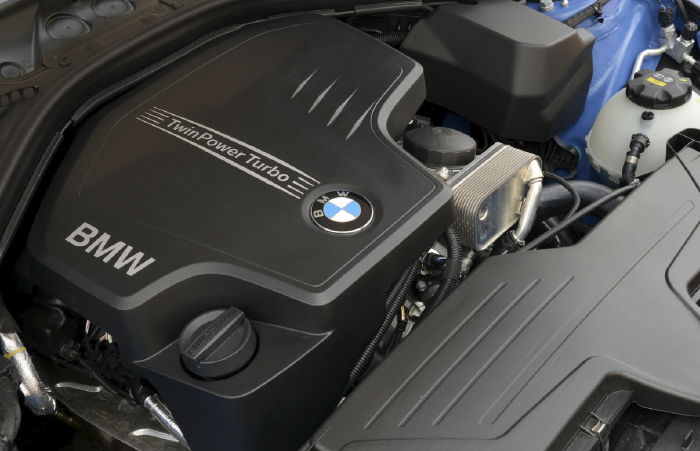There was a time when the BMW Series came in only odd numbers like 1, 3, 5 and 7. Soon, there were exceptions to the rules, like the 6 Series. But, in the 2000s, we received the 2 and 4 Series. The 4 Series was meant to fill the gap between the 3 and 5 Series, primarily focusing on coupes. The first generation has the platform designation F32 (coupe), F33 (convertible) and F36 (five-door liftback).
The platform does not stray far from the typical BMW engineering and operation. As for as maintenance, if you look at the owner’s and service manuals, you will notice the three words Condition Based Service, or CBS. The system uses sensors and unique algorithms to take into account the driving conditions of the vehicle. CBS uses these to calculate maintenance needs like engine oil and the starting battery. The system makes it possible to adapt the amount of maintenance corresponding to the owner.
Like the majority of BMW platforms, the engine is longitudinally mounted. All the engines available for the new BMW 4 Series Coupe use BMW TwinPower Turbo technology, which combines gasoline direct injection, turbocharging and the VANOS valvetrain.
Oil
Most BMW engines used for the 4 Series require a 0W20 that has a “Long Life” BMW certification. Calculation-based or intelligent oil life monitors use multiple inputs to determine the health of the oil. BMW was the first to market with an oil life indicator on the dash that was based on mileage in 1983.
At the heart of the equation are still mileage, revolutions and hours of operation. But, these systems also log oil and coolant temperatures to see if the engine has had time to burn off condensates in the oil. Some systems also use calendars to determine when to change the oil. If the date is not set in the driver information center, the oil life monitor might not work.
The other part of the equation is the oil. The CBS calculates the quality of the oil. Even if you use an oil that matches for viscosity, it might not meet the Long Life or LL for protection during the oil change interval.
Resetting the system requires using the iDrive and navigating the service menu.
The 4 Series uses an oil level sensor attached to the oil sump and is accessible from below. There is no longer an oil dipstick on vehicles with an oil level sensor. These engines have an electronic oil level check that can be checked using the driver information center or a scan tool.
Battery
The battery for the 4-Series is in the trunk. The application requires an AGM battery. If you find a conventional lead/acid battery in the trunk, it is recommended that you replace the battery for two reasons.
First, an AGM battery has a greater power density to operate the vehicle’s various systems. It also has a greater reserve capacity to operate vehicle components like the coolant pump for the turbocharger.
Second, the battery management system’s software was written for an AGM battery’s internal resistance. Since AGM and flooded acid batteries have different internal resistances, the battery management system could damage a flooded battery. Also, the state of health reading will not be accurate.
Since the battery is in the trunk, it can’t use a vent for hydrogen and oxygen. In an AGM battery, the two gases are converted back into water: The oxygen created at the positive electrode during charging passes through the permeable glass fiber fleece to the negative electrode. At the negative electrode, the oxygen reacts with the arriving hydrogen ions in the electrolyte to form water.
When a new battery is installed, the battery management system must register the new battery. The replacement battery must have the same amp/hour rating as the original. The registration can be completed using the iDrive menu or a scan tool.
Spark Plugs
In the early 2000s, BMW transitioned to high-ignitability, fine-wire spark plugs, starting with the N54/S54 engines. Now, most late-model BMWs use high-ignitability, fine-wire plugs with a dual-fine wire electrode design.
As new spark plug technology was introduced, BMW maintenance schedules have changed. The intervals can vary between 45,000 and 100,000 miles, depending on the engine under the hood.
BMW started using 12-point spark plugs in the mid-2000s called the bi-hex design, so you’ll need special sockets on hand to remove them. Most plugs you’ll come across will be 14mm, but you may occasionally find some 16mm plugs in specific engines. Given how difficult they can be to access, a swivel socket can come in handy and make the job go more smoothly.
















